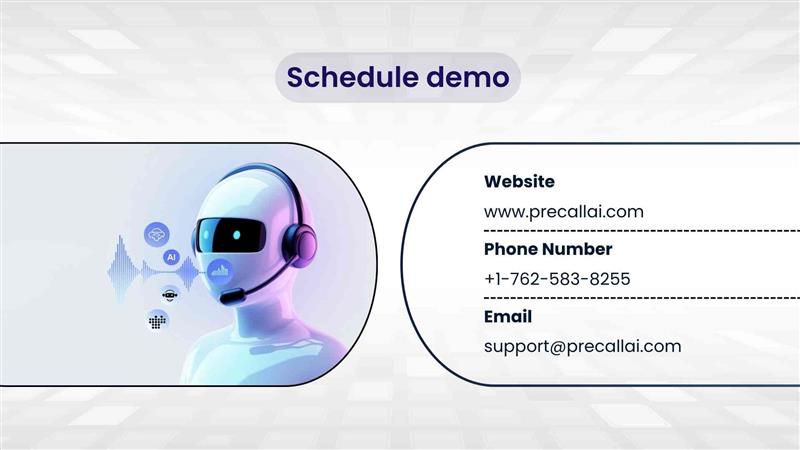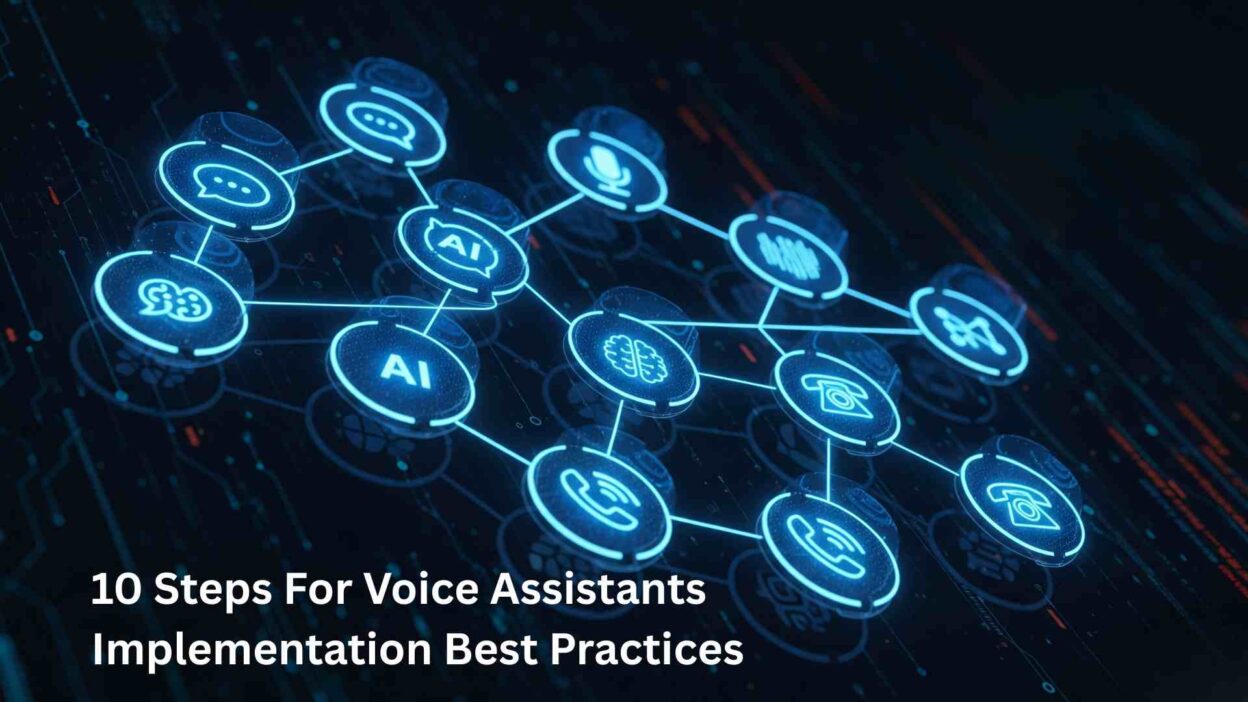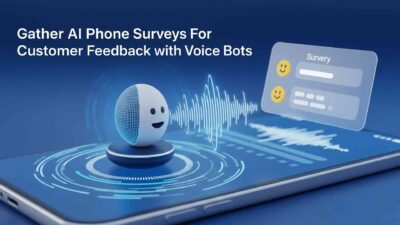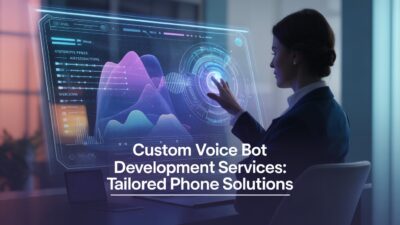TL;DR Voice assistant implementation best practices could have prevented this disaster. Smart businesses follow proven methodologies for successful deployments. The right approach turns phone automation into a competitive advantage.
Mike’s auto repair shop launched a voice assistant last month. The assistant confuse customers with complex menus. Appointment bookings dropped by 30%. Customer complaints flooded in daily.
Table of Contents
Mike made every common mistake in voice assistant deployment. He skipped planning phases completely. His team received no training whatsoever. Customer needs were never considered properly.
Why Voice Assistant Implementation Best Practices Matter
Voice assistant failures cost businesses thousands of dollars monthly. Poor implementations damage customer relationships permanently. Recovery from bad deployments takes months of effort.
Successful voice assistant implementation best practices require careful planning and execution. Best practices guide businesses through complex deployment challenges. Strategic approaches prevent common pitfalls that destroy projects.
Customer satisfaction depends on smooth voice interactions. Professional implementations build trust and loyalty. Sloppy deployments drive customers to competitors quickly.
Step 1: Define Clear Objectives and Goals
Identify Specific Business Problems
Start by documenting current phone system pain points. Count how many calls your staff handles daily. Calculate time spent on repetitive tasks and questions.
Measure customer wait times during peak hours. Track common complaint types and resolution times. Analyze which processes consume the most resources.
Set Measurable Success Metrics
Define specific goals for your voice assistant implementation. Target percentage improvements in call handling efficiency. Set customer satisfaction score benchmarks to achieve.
Establish timeframes for reaching different milestones. Create accountability measures for team members. Document expected ROI calculations and payback periods.
Align with Business Strategy
Voice assistant capabilities should support overall business objectives. Customer service improvements align with retention goals. Cost reduction targets should match budget constraints.
Integration requirements must fit existing technology infrastructure. Scalability needs should accommodate future growth plans. Compliance requirements vary by industry and region.
Step 2: Conduct Thorough Audience Research
Analyze Customer Demographics
Study your customer base age ranges and technology comfort levels. Older customers may prefer simpler voice interactions. Younger demographics expect sophisticated conversational experiences.
Regional accents and languages affect voice recognition accuracy. Cultural preferences influence conversation styles and expectations. Income levels impact tolerance for automated systems.
Map Customer Journey Touchpoints
Document every phone interaction customers have with your business. Identify which conversations happen most frequently. Determine optimal automation opportunities within customer workflows.
Peak calling times reveal staffing and capacity requirements. Seasonal patterns help plan for demand fluctuations. Emergency scenarios need special handling protocols.
Gather Customer Feedback
Survey customers about their phone experience preferences. Ask about automation acceptance and resistance factors. Collect suggestions for improvement opportunities.
Focus groups provide deeper insights into customer motivations. Beta testing reveals real-world usage patterns. Feedback loops enable continuous improvement processes.
Step 3: Choose the Right Technology Platform
Evaluate Platform Capabilities
Research voice recognition accuracy rates across different providers. Test natural language processing quality with your specific use cases. Compare integration options with existing business systems.
Scalability features determine long-term platform viability. Security certifications ensure compliance with industry regulations. Support quality affects implementation success rates.
Compare Pricing Models
Analyze setup costs, monthly fees, and per-minute charges. Volume discounts may significantly impact total cost calculations. Hidden fees for integrations and customizations add up quickly.
Free trial periods allow hands-on platform evaluation. Proof of concept deployments reveal real-world performance. ROI calculations help justify platform investments.
Assess Vendor Reliability
Check vendor track records and customer testimonials. Uptime guarantees affect business continuity planning. Financial stability ensures long-term platform availability.
Documentation quality indicates vendor professionalism and support levels. Training resources help teams become productive faster. Community forums provide peer support opportunities.
Voice Assistant Implementation Best Practices for Planning Phase
Create Detailed Project Roadmaps
Break implementation into manageable phases with clear timelines. Assign specific responsibilities to team members. Establish checkpoints for progress reviews and adjustments.
Resource allocation planning prevents bottlenecks and delays. Risk assessment identifies potential obstacles early. Contingency plans address common implementation challenges.
Develop Comprehensive Training Programs
Staff training ensures smooth transitions to new systems. Customer service representatives need conversation flow understanding. Technical teams require platform administration skills.
Training materials should include real-world scenarios and examples. Role-playing exercises build confidence with new tools. Ongoing education keeps teams current with platform updates.
Design Escalation Protocols
Human backup systems prevent customer frustration during assistant failures. Clear escalation triggers ensure appropriate handoffs to staff. Emergency protocols maintain service continuity during outages.
Staff workload balancing accommodates assistant-generated escalations. Performance monitoring identifies when escalation rates indicate problems. Customer satisfaction tracking validates escalation effectiveness.
Step 4: Design Intuitive Conversation Flows
Keep Interactions Simple and Clear
Use everyday language instead of technical jargon. Limit menu options to prevent customer confusion. Provide clear instructions for voice commands and keypad inputs.
Conversation paths should mirror natural human interactions. Confirmation steps prevent misunderstandings and errors. Error handling guides customers back to successful outcomes.
Implement Smart Routing Logic
Route customers to appropriate departments based on their needs. Prioritize high-value customers for faster service. Emergency situations require immediate human attention.
Historical data improves routing accuracy over time. Machine learning optimizes conversation flows automatically. A/B testing identifies the most effective routing strategies.
Create Fallback Options
Provide alternative paths when primary options fail. Repeat menu options for customers who miss them. Offer human assistance for complex or unusual requests.
Speech recognition failures need graceful recovery mechanisms. Timeout handling prevents customers from being abandoned. Multiple input methods accommodate different user preferences.
Step 5: Implement Robust Testing Protocols
Conduct Comprehensive Quality Assurance
Test all conversation paths with different customer scenarios. Verify integration functionality with existing business systems. Validate voice recognition accuracy across various accents and speech patterns.
Load testing ensures system performance during peak usage. Security testing protects sensitive customer information. Compliance testing verifies regulatory requirement adherence.
Perform User Acceptance Testing
Gather feedback from actual customers during beta testing. Monitor customer satisfaction scores throughout testing phases. Document issues and resolution success rates.
Staff feedback reveals operational challenges and training needs. Performance metrics indicate system readiness for full deployment. Iterative improvements based on testing results enhance final outcomes.
Execute Pilot Programs
Limited deployments allow controlled testing with real customers. Gradual rollouts minimize risk exposure during initial phases. Feedback collection enables rapid iteration and improvement.
Success metrics from pilots guide full deployment strategies. Lessons learned prevent repeating mistakes in broader rollouts. Confidence building through successful pilots ensures stakeholder buy-in.
Step 6: Launch with Gradual Rollout Strategy
Start with Limited Customer Segments
Begin with customers who are most likely to accept automation. Target tech-savvy demographics for initial deployments. Focus on high-volume, low-complexity interactions first.
Geographic rollouts allow regional optimization and customization. Department-by-department launches enable focused support and training. Time-based rollouts spread implementation workload evenly.
Monitor Performance Metrics Closely
Track call completion rates and customer satisfaction scores. Measure response times and accuracy levels continuously. Identify performance trends and degradation patterns quickly.
Real-time monitoring enables immediate issue response. Automated alerts notify teams of critical problems. Performance dashboards provide visibility into system health.
Collect Continuous Feedback
Customer surveys reveal satisfaction levels and improvement opportunities. Staff observations identify operational challenges and successes. System logs provide technical performance insights.
Feedback analysis guides optimization priorities and resource allocation. Regular reviews ensure implementation stays on track. Adjustments based on feedback improve long-term success.
Step 7: Optimize Based on Real-World Usage
Analyze Call Data and Patterns
Study conversation transcripts to identify common customer needs. Analyze failure points where customers abandon interactions. Track which features get used most frequently.
Peak usage times indicate capacity planning requirements. Seasonal patterns help optimize resource allocation. Customer behavior insights guide feature development priorities.
Refine Conversation Scripts
Update responses based on customer feedback and confusion points. Simplify language that customers find difficult to understand. Add new options for frequently requested services.
Machine learning algorithms improve responses over time automatically. A/B testing validates script changes before full deployment. Version control tracks script evolution and performance impacts.
Enhance Integration Capabilities
Improve data synchronization between voice assistant and business systems. Add new integration points for enhanced functionality. Optimize API performance for faster response times.
Custom integrations may be needed for unique business requirements. Third-party service connections expand assistant capabilities. Security reviews ensure integration safety and compliance.
Voice Assistant Implementation Best Practices for Long-Term Success
Establish Ongoing Maintenance Procedures
Regular system updates ensure optimal performance and security. Voice model training improves accuracy over time. Platform upgrades add new features and capabilities.
Performance monitoring identifies degradation before customer impact. Preventive maintenance prevents system failures and downtime. Documentation updates keep teams informed of changes.
Create Continuous Improvement Processes
Monthly performance reviews identify optimization opportunities. Customer feedback drives feature development priorities. Competitive analysis reveals industry best practices.
Innovation initiatives explore new voice assistant capabilities. Training programs keep teams current with technology advances. Strategic planning aligns voice assistant evolution with business growth.
Scale Successfully with Business Growth
Capacity planning ensures system performance during growth periods. Feature additions support expanding business requirements. Multi-location deployments require careful coordination and standardization.
Advanced analytics provide insights for strategic decision-making. Automation of routine maintenance tasks reduces operational overhead. Vendor relationship management ensures ongoing support quality.
Step 8: Train Staff for Human-Assistant Collaboration
Develop New Skill Sets
Staff members need skills for working alongside voice assistants. Complex problem-solving becomes the primary human responsibility. Emotional intelligence training helps with escalated customers.
Technical training covers assistant management and troubleshooting. Customer service skills adapt to assistant-augmented environments. Leadership development prepares managers for hybrid teams.
Create Clear Role Definitions
Define which tasks belong to AI voice assistants versus human agents. Establish escalation criteria and handoff procedures. Document authority levels for different interaction types.
Performance metrics should reflect new role responsibilities. Compensation structures may need adjustment for changed job requirements. Career development paths adapt to technology-enhanced roles.
Build Effective Communication Channels
Regular team meetings discuss AI voice assistant performance and customer feedback. Documentation systems track issues and resolutions. Training updates keep everyone informed of system changes.
Cross-departmental collaboration improves overall customer experience. Feedback loops between technical and customer service teams drive improvements. Change management processes ensure smooth transitions.
Step 9: Ensure Compliance and Security
Meet Industry Regulations
Healthcare voice assistants must comply with HIPAA privacy requirements. Financial services need adherence to banking regulations. Data protection laws vary by region and customer location.
Audit trails document all customer interactions for compliance purposes. Encryption protects sensitive information during transmission and storage. Access controls limit system administration to authorized personnel.
Implement Security Best Practices
Regular security assessments identify vulnerabilities and risks. Penetration testing validates security control effectiveness. Incident response plans address potential security breaches.
Staff training covers security protocols and procedures. Vendor security certifications provide third-party validation. Insurance coverage protects against security-related losses.
Maintain Customer Privacy
Data minimization principles limit collection to necessary information only. Retention policies automatically delete old customer interaction records. Consent mechanisms respect customer privacy preferences.
Transparency reports explain data usage and protection practices. Customer rights procedures enable data access and deletion requests. Privacy impact assessments guide system design decisions.
Step 10: Measure ROI and Business Impact
Track Financial Metrics
Calculate cost savings from reduced staff requirements and overtime. Measure revenue increases from improved customer service levels. Document efficiency gains from automated processes.
Implementation costs include platform fees, integration work, and training expenses. Payback period calculations justify initial investment decisions. Ongoing cost analysis guides budget planning and optimization.
Monitor Customer Satisfaction
Survey customers about their voice assistant experience regularly. Track Net Promoter Scores before and after implementation. Analyze customer retention rates and churn patterns.
Complaint volume and resolution times indicate service quality levels. Social media sentiment reveals public perception of automation efforts. Competitive benchmarking shows relative performance positions.
Evaluate Operational Improvements
Staff productivity metrics show human resource optimization results. Call volume handling capacity demonstrates scalability improvements. Error reduction rates indicate quality enhancements.
Process efficiency gains streamline business operations. 24/7 availability expands service capability windows. Multilingual support opens new market opportunities.
Common Pitfalls to Avoid
Rushing Implementation Timelines
Adequate planning time prevents costly mistakes and rework. Proper testing phases ensure quality before customer exposure. Staff training requirements need realistic time allocation.
Pressure for quick wins often leads to poor customer experiences. Technical shortcuts create long-term maintenance problems. Change management takes time for successful adoption.
Ignoring Customer Preferences
Customer research reveals automation acceptance levels and preferences. Demographic analysis guides conversation design and complexity levels. Feedback incorporation shows respect for customer needs.
One-size-fits-all approaches often fail across diverse customer bases. Cultural sensitivity prevents misunderstandings and offense. Accessibility requirements ensure inclusive service delivery.
Inadequate Staff Preparation
Comprehensive training programs ensure smooth transitions to new systems. Change management addresses resistance and concerns proactively. Support systems help staff adapt to new responsibilities.
Clear communication about implementation plans reduces uncertainty and anxiety. Involvement in planning processes builds buy-in and ownership. Recognition programs celebrate successful adaptation efforts.
Read More: Global Business Growth With Multi-Language AI Phone Agents
Conclusion

Voice assistant implementation best practices determine success or failure in phone automation projects. Careful planning prevents expensive mistakes and customer dissatisfaction. Strategic approaches create competitive advantages through superior customer service.
The ten steps outlined provide a comprehensive roadmap for successful deployments. Each phase builds upon previous work to ensure solid foundations. Skipping steps or rushing processes typically leads to disappointing results.
Successful voice assistant implementations require commitment to best practices throughout the entire process. Technology alone cannot guarantee success without proper planning and execution. Customer-focused approaches ensure automation enhances rather than hinders business relationships.
Your business can achieve voice assistant success by following these proven methodologies. Implementation excellence comes from attention to detail and customer needs. The investment in proper implementation pays dividends through improved operations and customer satisfaction.
Voice assistant technology continues evolving rapidly with new capabilities and features. Best practices adaptation ensures your implementation remains competitive and effective. Success comes from balancing technological possibilities with customer expectations and business objectives.






[…] Read More: 10 Steps For Voice Bot Implementation Best Practices […]
[…] provides solutions that work across industry boundaries. AI voice automation adapts to different business models. Customization options meet specific industry requirements. […]
[…] logs provide valuable insights for ongoing voice bot training and optimization efforts. Failed interactions reveal specific training gaps requiring attention. Successful patterns […]